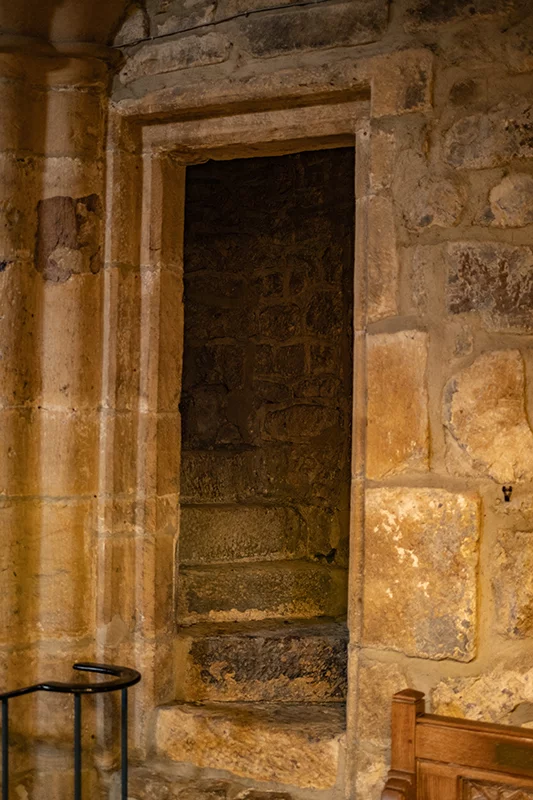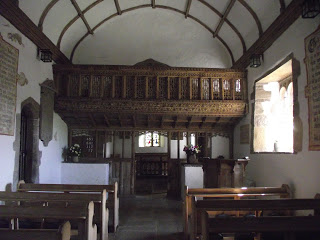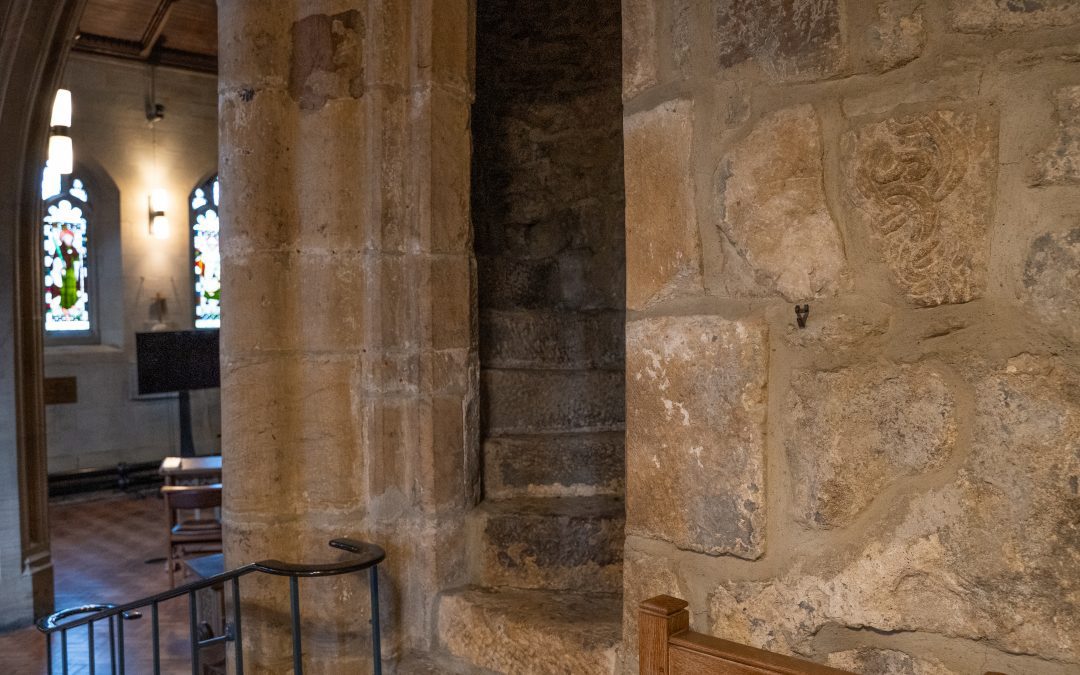A secret stairway, but where does it go?

The stairs to nowhere are a favourite aspect of the Cathedral and everyone wants to know why we have a staircase that doesn’t appear to go anywhere! The stairs are interesting because not only do they prove evidence of an ever changing and developing church building, they also remind us of a very troubled time in the Church’s history in this country.
Originally the Cathedral was a Roman Catholic church and it will have had a ‘Holy Rood’ a big cross with Jesus upon it (a crucifix) standing high above the congregation on a Rood beam, above the chancel (just in front of where the choir now sits). There may even have been a very fancy Rood screen, which divided worshippers from the high alter, marking the divisions between the ordinary and everyday and the spiritual and holy; the Rood screen was originally seen as symbolising the sin (the bad things people do) that separate people from God.
Access to the Rood beam was by way of the Rood loft, set above the Rood screen. On special occasions (for example Easter) the priest would preach from the loft, near the crucifix. In churches there was always a staircase that led to the Rood loft, usually built into the wall of the church. Our stairs to nowhere started their life as the stairs to the Rood loft.
When King Henry the VIII made himself head of the Church in England on the 3rd November 1534, the church was no longer Catholic, it became ‘Church of England’ and the crucifix will have been removed soon afterwards. The Rood loft and screen were probably allowed to remain. There was no major demolition of the Roods until the reign of Henry’s son Edward VI. Early in his reign his church reforms, called for the removal of all shrines, images, candlesticks, painted images on walls, screens and even stained glass windows; all were seen as being to do with the ‘old’ Catholic religion not the ‘new’, ‘reformed’, Church of England.
During Elizabeth the I’s reign it was common for any Rood screens still in existence to be removed. The rood lofts were no longer needed. The stairs that led to them were largely blocked up and plastered over but in a few churches (including here at the Cathedral) the stairs still remain, built into the solid wall, now leading nowhere, a reminder of our medieval past.

(photo Judith Arnopp)


A fascinating insight to the history of church worship and the symbolic meaning of its architecture. Thanks to the welcomer Robert for pointing us to many key features we would otherwise have missed.
Thank you for visiting and for leaving your review, and we glad you enjoyed your visit here!
This is a good tool, thanks for providing it